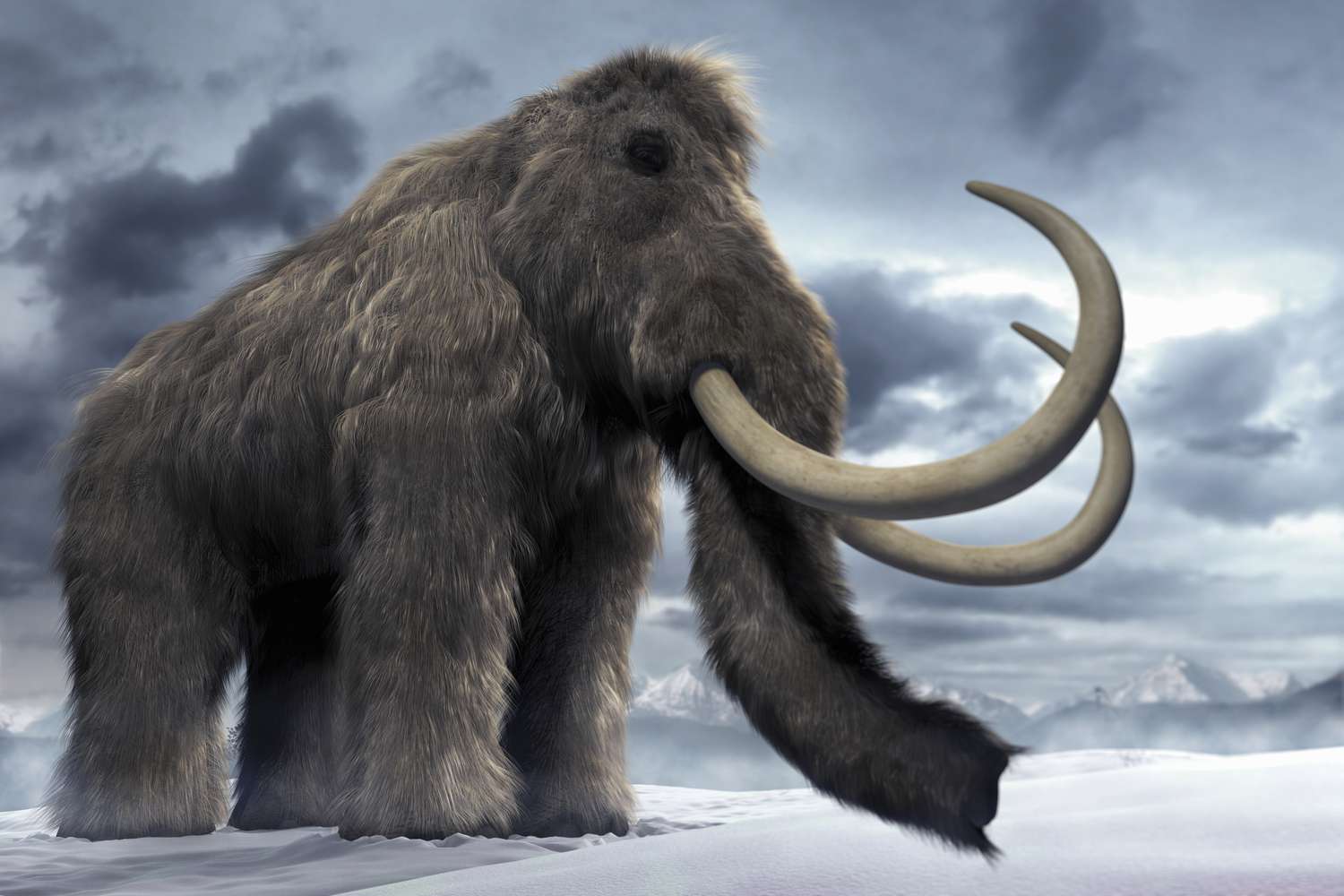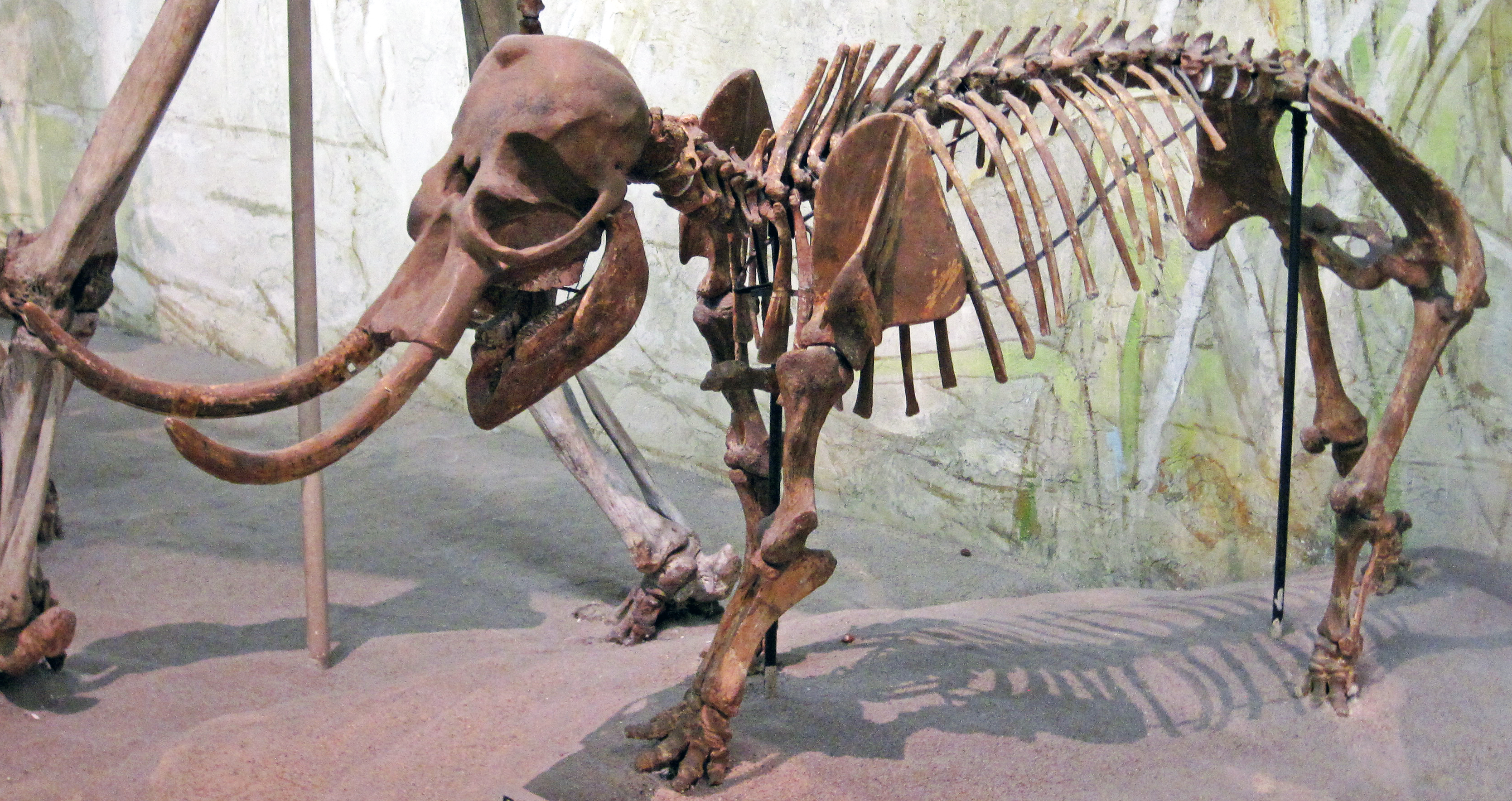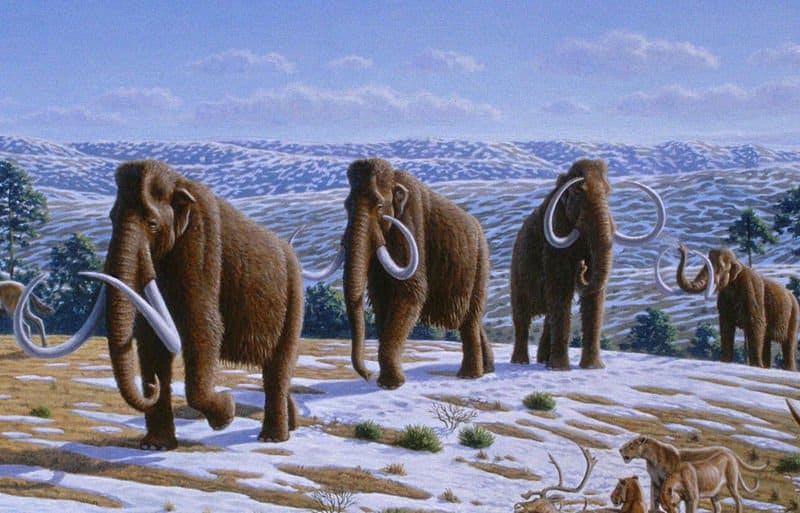Elephants are one of the most iconic and beloved animals in the world. They are known for their intelligence, social behavior, and their impressive size.
While there are still living species of elephants, there were several species of elephants that have gone extinct over time. These extinct species of elephants are natural wonders that extend the focus of current research back millions of years.
You are reading: 8 Extinct Types Of Elephants
In this article, we will investigate some of the extinct species of elephants that were the ancestors of the beautiful beasts we see today.

8 Extinct Types Of Elephants
Palaeoloxodon recki
Palaeoloxodon recki is an extinct species of elephant that lived in Africa and likely West Asia from the late Pliocene to Middle Pleistocene. During most of its existence, it represented the dominant elephant species in East Africa.
The earliest P. recki specimen is the subject of uncertainty, due to the debate about what specimens are actually applicable to the species. At the end of the Early Pleistocene, a population of P. recki migrated out of Africa, giving rise to the Eurasian radiation of Palaeoloxodon.
Its descendant taxon or last evolutionary stage, Palaeoloxodon iolensis, is known from remains found across Africa of late Middle Pleistocene to Late Pleistocene age.
Palaeoloxodon recki was one of the largest elephants that ever lived, weighing up to 16 tons. M. Beden identified five subspecies of Palaeoloxodon recki, from oldest to youngest: P. r. brumpti, P. r. shungurensis, P. r. atavus, P. r. ileretensis, and P. r. recki (Dietrich, 1916) .
Pygmy Elephant (Palaeoloxodon falconeri)

Palaeoloxodon falconeri is an extinct species of dwarf elephant that lived in the Middle Pleistocene of Sicily and Malta. It is the smallest of all dwarf elephants, standing only 1 meter (3.3 feet) tall at the shoulder.
Palaeoloxodon falconeri derived from a population of the mainland European straight-tusked elephant (Palaeoloxodon antiquus) that arrived in Europe approximately 800,000 years ago. The oldest radiometrically dated fossils of Palaeoloxodon on Sicily date to around 500,000 years ago.
The pygmy elephant’s ancestors most likely reached Sicily from the Italian mainland, likely via a series of islands that now form part of the southern Calabrian peninsula.
Palaeoloxodon falconeri is an example of insular dwarfism, which is a phenomenon where animals that are isolated on islands evolve to be smaller in size.
Read more : Are Lizards Poisonous And 3 Types Of Venomous Lizards
The period in which P. falconeri lived was one of dramatic environmental and climatic change, with Sicily undergoing changes in tectonic activity and sea level.
It is unknown when exactly the pygmy elephant became extinct and why. Other dwarf species separate from Palaeodoxon falconeri also inhabited Italy and Malta, and additionally Greek and Indonesian islands.
Woolly mammoth (Mammuthus primigenius)

The woolly mammoth (Mammuthus primigenius) is an extinct species of elephant that lived during the Pleistocene until its extinction in the Holocene epoch. It was one of the last in a line of mammoth species, beginning with the African Mammuthus subplanifrons in the early Pliocene.
The woolly mammoth began to diverge from the steppe mammoth about 800,000 years ago in East Asia. Fully grown males reached shoulder heights between 2.67 and 3.49 m (8.8 and 11.5 ft) and weighed up to 8.2 tonnes (9.0 short tons).
The woolly mammoth’s appearance is probably the best known of any prehistoric animal due to the many frozen specimens with preserved soft tissue and depictions by contemporary humans in their art.
They had a yellowish-brown undercoat about 2.5 cm (about 1 inch) thick beneath a coarser outer covering of dark brown hair that grew more than 70 cm (27.5 inches) long in some individuals. Under the extremely thick skin was a layer of insulating fat at times 8 cm (3 inches) thick.
Its skull was high and domelike, with large downward-directed curved tusks. The woolly mammoth’s teeth were made up of alternating plates of enamel and a denture that often became worn down by constant back-to-front chewing motions.
The woolly mammoth’s ears were small, which exposed a smaller amount of surface area and was likely an adaptation to the cold climates in the Pleistocene.
Straight-tusked elephant (Palaeoloxodon antiquus)
The straight-tusked elephant (Palaeoloxodon antiquus) is an extinct species of elephant that inhabited Europe and Western Asia during the Middle and Late Pleistocene. Here are some interesting facts about this species:
– The straight-tusked elephant was one of the largest terrestrial mammals of the Pleistocene epoch, weighing an estimated 11.3–15 tonnes and reaching up to 4–4.2 meters in height.
– Like many other members of the genus Palaeoloxodon, P. antiquus possessed a well-developed parieto-occipital crest at the top of the cranium that anchored the splenius as well as possibly the rhomboid muscles to support the large head, the largest proportionally and in absolute size among proboscideans.
– Two morphs of P. antiquus were previously suggested to exist in Europe on the basis of parieto-occipital crest variation, one more similar to P. recki and the other more similar to P. namadicus.
– The species was first named in 1847 by Hugh Falconer and Proby Cautley for remains found in East Sussex as Elephas antiquus. The genus Palaeoloxodon was first named in 1924 by Matsumoto Hikoshichirō as a subgenus of Loxodonta, and E. antiquus subsequently assigned to the genus.
– Some experts regarded the larger Asian species Palaeoloxodon namadicus as a variant or subspecies, but they are now considered distinct.
– Like other Eurasian Palaeoloxodon species, P. antiquus is believed to derive from the African P. recki.
– Neanderthals hunted straight-tusked elephants 125,000 years ago.
– The straight-tusked elephants were a widespread group that lived during the Pleistocene and were able to show that the ancestor species, Palaeoloxodon recki, dispersed from Africa into the Near East roughly 780,000 years ago.
– The straight-tusked elephant Palaeoloxodon antiquus dispersed rapidly in Europe around 1 million years ago, replacing the southern mammoth Mammuthus meridionalis Nesti.
– The straight-tusked elephant Palaeoloxodon antiquus had its last vestiges in the same period and the same biogeographical area as the woolly mammoth.
– For a long time, palaeontologists thought that the European species, Palaeoloxodon antiquus, had a rather slenderly built skull roof crest.
Loxodonta adaurora
Loxodonta adaurora is an extinct species of elephant in the genus Loxodonta, that of the African elephants. Fossils of Loxodonta adaurora have only been found in Africa, where they developed in the Pliocene.
L. adaurora was presumed to be the genetic antecedent of the two modern African elephant species; however, an analysis in 2009 suggested that L. africana evolved from L. atlantica.
The same study concluded that Loxodonta adaurora was morphologically indistinguishable from Mammuthus subplanifrons and that these constituted the same species probably within the mammoth lineage.
Read more : Discover The Top 5 Largest, Most Dangerous Spiders In Nevada
However, other authors have continued to consider L. adaurora a valid species of Loxodonta, with some considering it an ancestor of the modern African elephants.
A study published in 2021 analyzed a fossil elephant cranium of L. adaurora and found that it displayed adaptations that likely gave it an edge when competing with other large mammals for grasses.
The animal’s molars were higher-crowned and had thicker coatings of cementum than other early elephants, making the teeth more resistant to the wear common in animals that feed on grasses close to the ground.
Loxodonta atlantica
Loxodonta atlantica is an extinct species of elephant that lived in Africa during the Late Pliocene to Middle Pleistocene. Here are some interesting facts about this species:
– Loxodonta atlantica was larger than modern African elephants, with more progressive dentition.
– It is suggested to have an extinction date of around 400,000 years ago, during the Middle Pleistocene.
– L. atlantica has been suggested to have probably derived from L. adaurora or L. exoptata.
– It is likely ancestral to the living African bush elephant, L. africana, which it coexisted with during the Middle Pleistocene.
– Loxodonta atlantica is known from Pleistocene fossils found in Ternifine, Algeria, Middle Pleistocene fossils from Elandsfontein, South Africa, and Late Pliocene fossils from the Omo River, Ethiopia.
– Loxodonta atlantica, Loxodonta africana, and Elephas recki were the most abundant proboscidean species in Africa during the Middle Pleistocene.
– The craniomandibular morphology of L. atlantica supports its attribution to the genus Loxodonta.
– Loxodonta atlantica is an extinct species of elephant that was larger than the modern African elephant, with more progressive dentition.
– Loxodonta atlantica is an example of the diversity of elephants that once roamed the African continent.
Loxodonta cookei
Loxodonta cookei is an extinct species of African elephant that lived in Uganda, Tanzania, and South Africa during the Pliocene epoch. The species name is dedicated to H. Basil S. Cooke, a paleontologist who specialized in extinct African mammals.
Most of the fossils found from this species were teeth. Loxodonta cookei was proposed by William J. Sanders in 2007 based on teeth found in the Varswater Formation at Langebaanweg, South Africa. The species is known only from teeth, and its exact size and appearance are unknown.
Loxodonta exoptata
Loxodonta exoptata is an extinct species of elephant in the genus Loxodonta, from Africa. Here are some interesting facts about this species:
– A 2009 study suggested that Loxodonta exoptata gave rise to L. atlantica, which gave rise to L. africana.
– The molars of L. exoptata are distinguished from later loxodonts by the lower plate number and their specialized enamel loops.
– Fossil remains of L. exoptata have been found at Pliocene sites in eastern Africa including Hadar, Laetoli, and Koobi Fora.
– Loxodonta exoptata is known only from teeth, and its exact size and appearance are unknown.
– Loxodonta exoptata is an example of the diversity of elephants that once roamed the African continent.
FAQS
1. What are some extinct species of elephants?
Some extinct species of elephants include Palaeoloxodon recki, Pygmy Elephant (Palaeoloxodon falconeri), Woolly mammoth (Mammuthus primigenius), Straight-tusked elephant (Palaeoloxodon antiquus), Loxodonta adaurora, Loxodonta atlantica, Loxodonta cookei, and Loxodonta exoptata.
2. What caused the extinction of past elephant species?
There are several factors that contributed to the extinction of past elephant species, including climate change, habitat loss, and hunting by humans.
3. What is the difference between African and Asian elephants?
African elephants are larger than Asian elephants and have larger ears. African elephants also have a concave back, while Asian elephants have a convex back.
4. What is insular dwarfism?
Insular dwarfism is a phenomenon where animals that are isolated on islands evolve to be smaller in size.
5. What is the biggest threat to African elephants today?
The biggest threat to African elephants today is poaching for the illegal ivory trade.
6. How many species of elephants are living today?
There are two living species of elephants: African elephants (Loxodonta africana) and Asian elephants (Elephas maximus).
7. What can we learn from studying extinct species of elephants?
Studying extinct species of elephants can give us insight into the natural world millions of years ago and help us understand the evolution of modern elephants.
Source: https://petstutorial.com
Category: Animals










